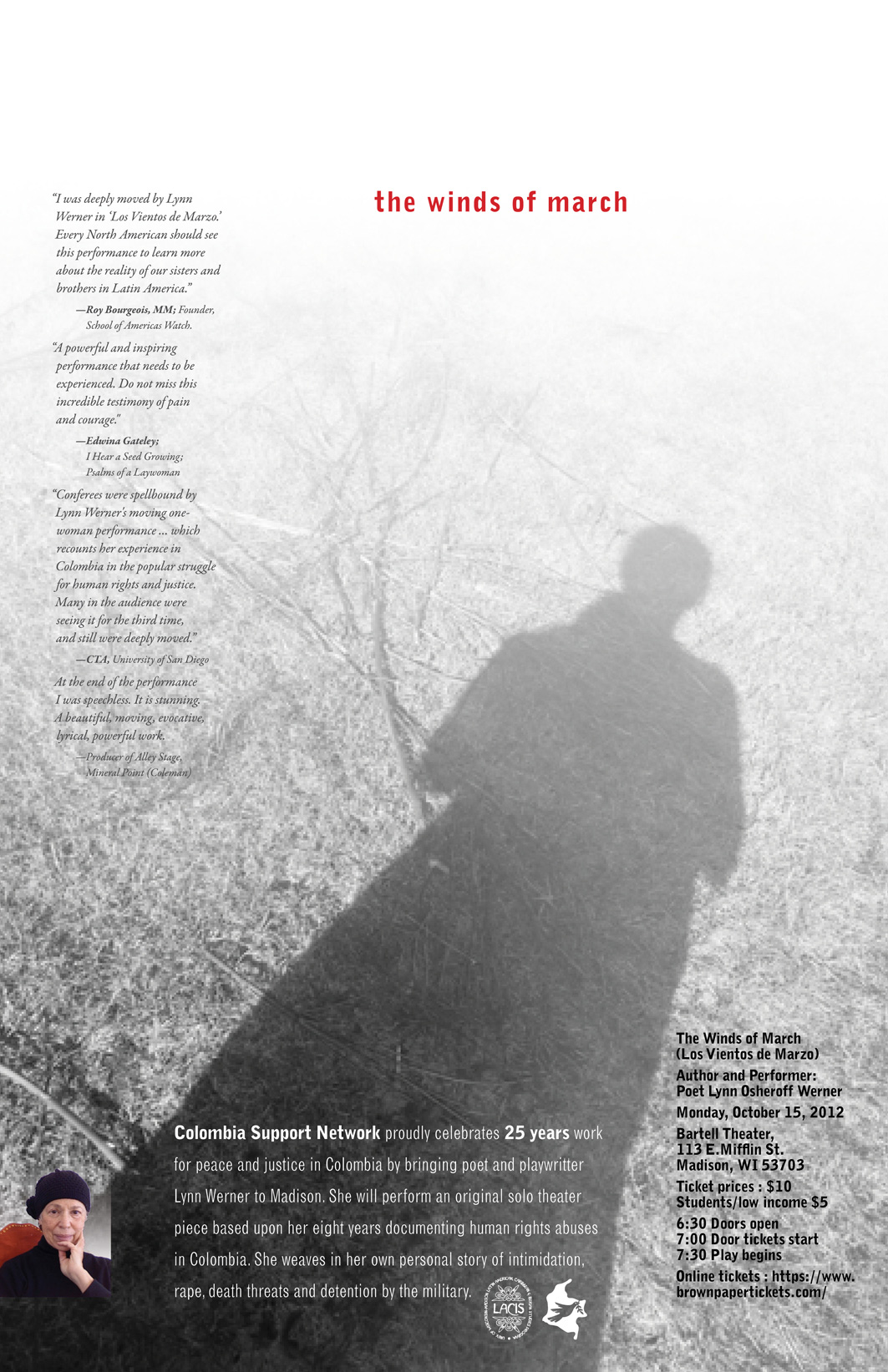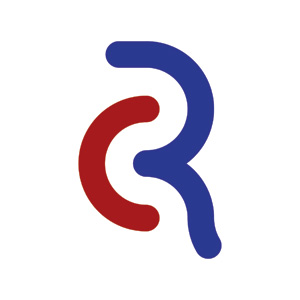| Throughout the years, AMCP entrants have submitted more than 2,000 pro bono entries. While that is a lot of work donated to nonprofits, we’re sure it is only a small percentage of the time, money, effort and skill that our entrants give back to their communities. Throughout the next couple of months, we’re profiling some of these people and sharing their stories with you in our series, Giving Back Through Marketing and Communications. |
Randy Clark, head of Randy Clark Graphic Design out of Brookings, South Dakota, recently took home a Platinum 2014 Hermes Creative Award for his Winds of March poster after donating his time and skills to the Colombia Support Network. We were able to get a few minutes of his time to learn about the nonprofit, how he got involved, and the key to creating successful ads.

Tell us what Colombia Support Network does and how it helps people.
Colombia Support Network is a nonprofit peace organization that monitors human rights (or more specifically, the lack of it) in the country of Colombia in South America. Its mission involves information gathering and bringing it to light. It also works to educate people, conduct informational excursions into remote parts of Colombia and build corresponding sister city relationships here the United States.
How did you find out about CSN? Why did you choose to donate your time and skills to create a poster for the organization?
I went to Colombia as a Mormon missionary, freshly minted out of high school. I labored there for two years in the cities of Pereira, Bogotá, Cali, and Medellín.
Upon arriving back in the United States, I resumed my studies, married, had a family, and worked in graphic design for 20 or so years. While an adjunct professor for Utah State University, I entered into their graduate program. For my thesis, I choose the subject of the “Civil War in Colombia,” which seemed to be a natural fit.
Researching for my thesis, I came upon the Colombia Support Network website, which had a comprehensive source of material that I downloaded.
Joining the organization, I came unannounced to their annual meeting. Not realizing it at the time, the conference was just for chapter officers, and I essentially was crashing their meeting. I asked them to put me to work, and they did.
Walk me through the design process. Did CSN provide direction for you? Did you look somewhere for inspiration?
The design process is the same for every project. Know your subject matter; know your audience.
There is no substitution for the time-consuming but necessary research component—both in terms of content and creative audits. Since I am a university professor with a small freelance business, I have the resources of our university library. On a Friday afternoon, after classes are out, I normally go look through the volumes of design books seeking inspiration. I’ll photocopy pages that I feel relevant to the particular project I am working on for later reference.
Most clients are painfully cautious and conservative. As a designer, one must demonstrate confidence in great design. It isn’t about salesmanship, but building a case that good design is in the best interest of everyone. No one wants to buy something that is ugly, and no one wants to do business with a company with an unprofessional image. We all are attracted to things that are designed well.
In the case of CSN, rapport and trust has developed over the years. I am given carte blanche on whatever I care to do.
What were some of the most challenging aspects of the project?
Challenges I encounter are what a designer experiences everyday: tight deadlines and limited resources. I have another challenge in that there always seems to be a huge amount of copy that must go on the poster/announcement.
Years ago, while studying as an undergraduate, our department flew in James Cross, a distinguished graphic designer who was known for his deft and subtle approaches to annual report design. Someone asked him a question that seemed so germane to our craft, “How do you determine what is good design?”
He responded with a formula I have never forgotten – AIDA. Attention, Interest, Desire, and Action. Before you can move people to action, you must first get their attention, then their interest, and in that order. The desire and action part comes later. That means body copy can be small, and white space is a virtue.
I also understood that screaming headlines and crowding type and pictures onto an ad will not work. One has to approach communication with thought and respect for the audience. Ads that shout are so often ignored precisely because they are intrusive. People tune out noise but willingly struggle to listen to a whisper.
If you really want your work to stand out, surround your type with space. Because your ad will be the only that does.
How was the poster received by CSN and its target audience?
I received a phone call from Cecilia Zarate-Laun, the program director of CSN, who said the governing board was overjoyed with the poster. The event sold out.
Do you have plans to keep working with CSN?
Certainly. The Colombia Support Network comprises of people, who like myself, are concerned about the country and its strong and beautiful citizenry. I see this as an extension of my labors as a missionary. One of the greatest joys I’ve received is an appreciation from the organization for which I do this work. I hope to continue doing their work for years to come.
*****
 Randy Clark Graphic Design is run by Randy Clark, a freelance graphic designer specializing in print solutions: advertising, packaging, corporate identity and marketing. Contact Randy at randyclarkmfa@icloud.com or 605-691-2203.
Randy Clark Graphic Design is run by Randy Clark, a freelance graphic designer specializing in print solutions: advertising, packaging, corporate identity and marketing. Contact Randy at randyclarkmfa@icloud.com or 605-691-2203.
Have you donated your services to a nonprofit or do you know someone that has? The Communitas Awards, which recognizes exceptional businesses, organizations and individuals for excellence in community service and corporate social responsibility, is now accepting nominations.

 Follow
Follow